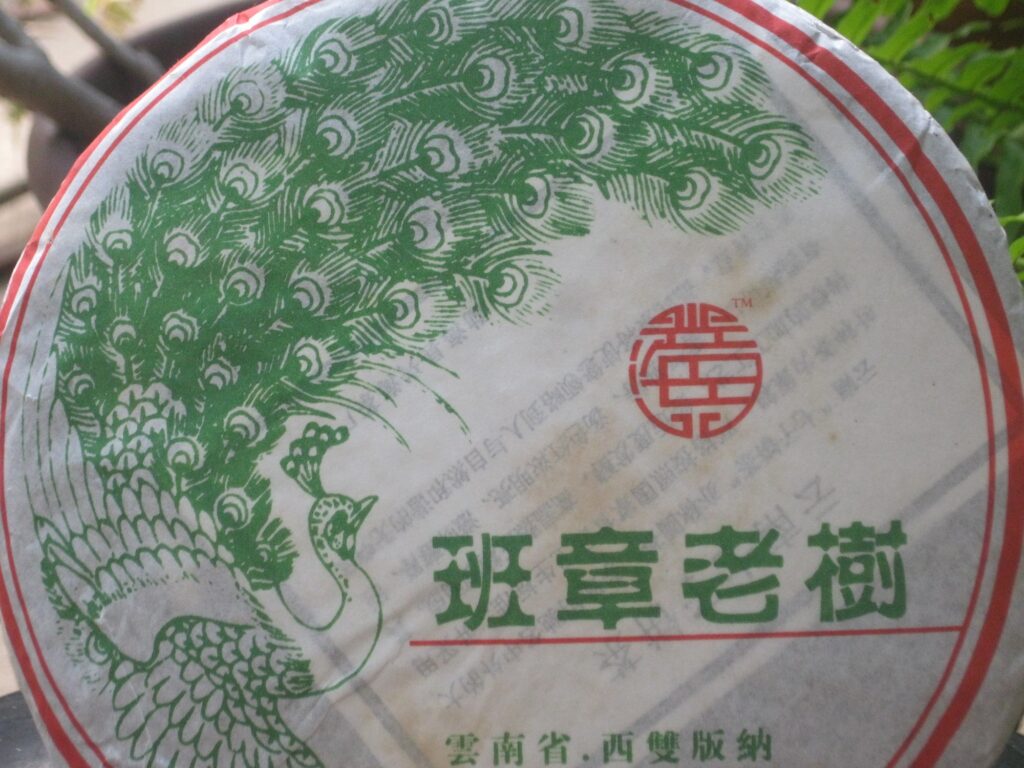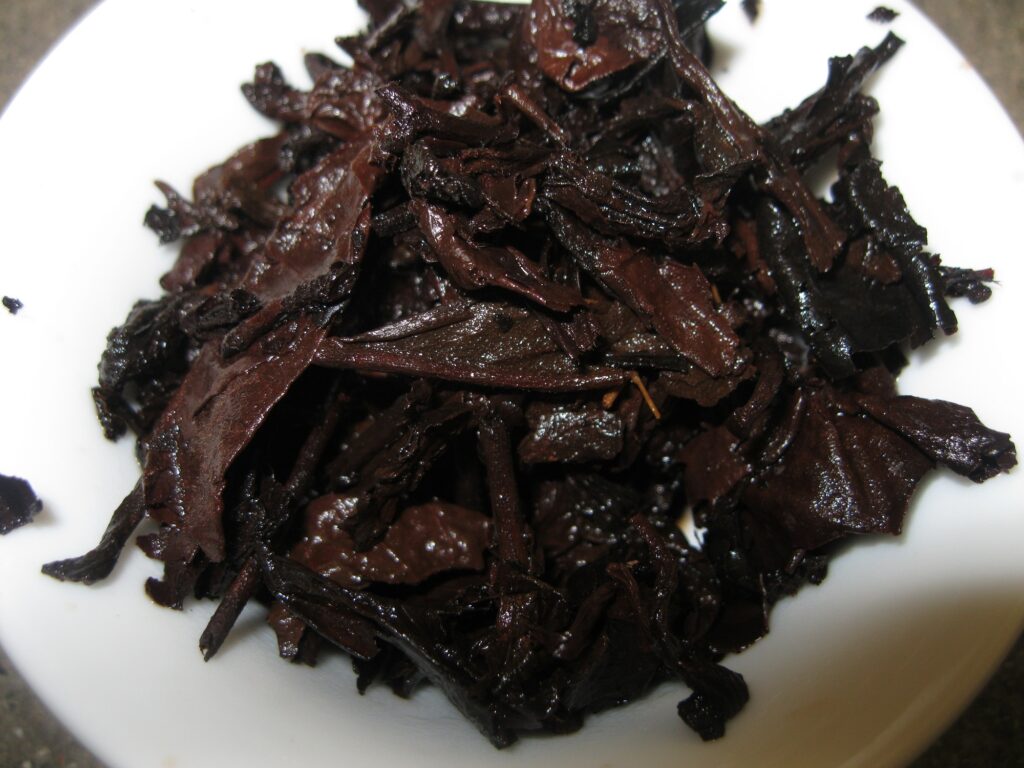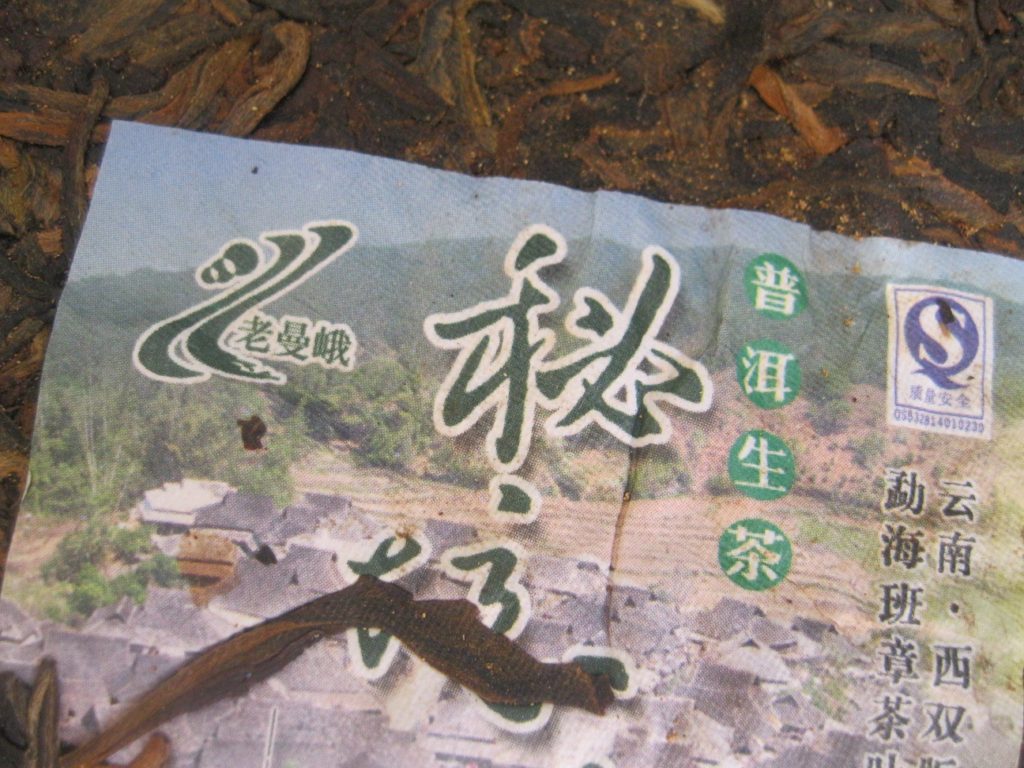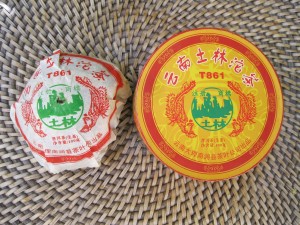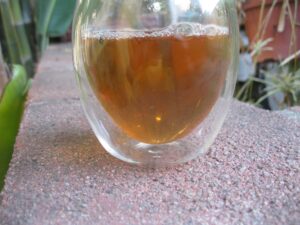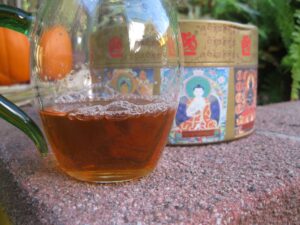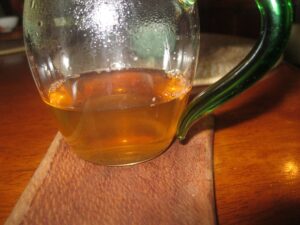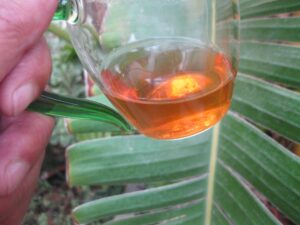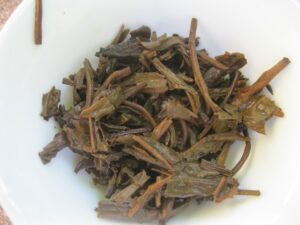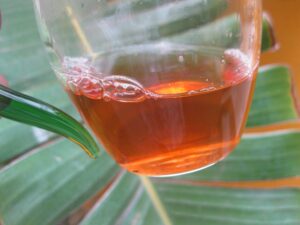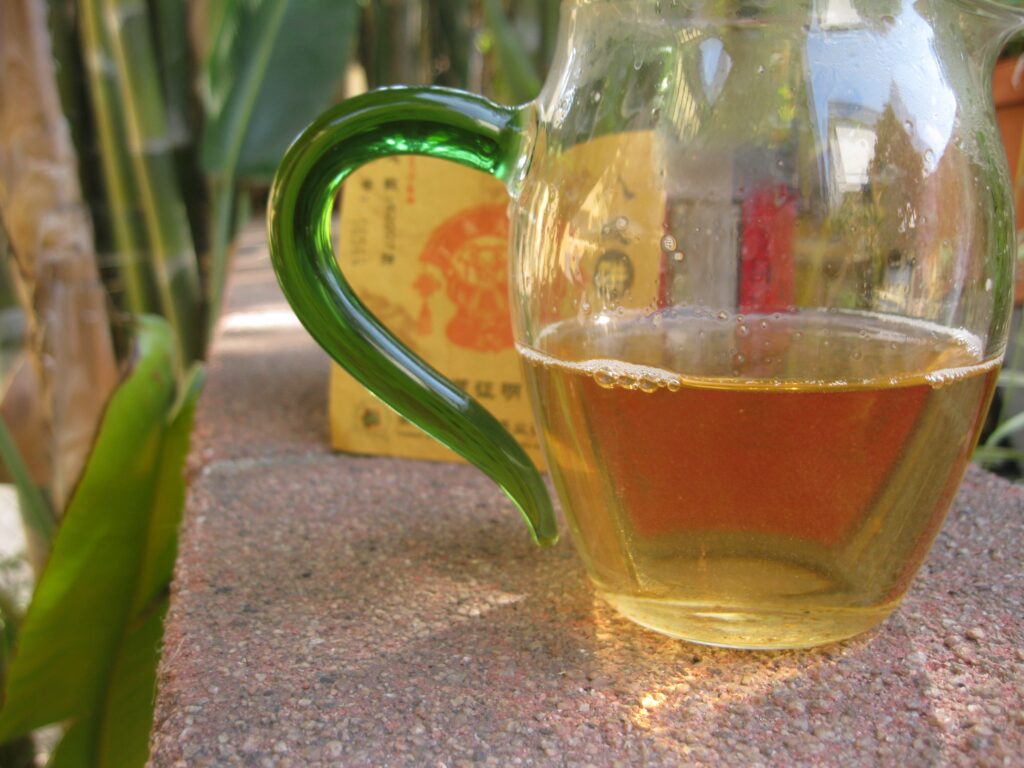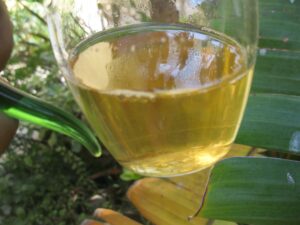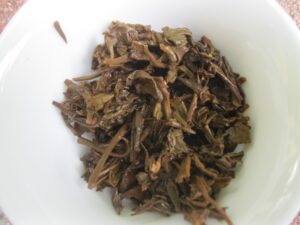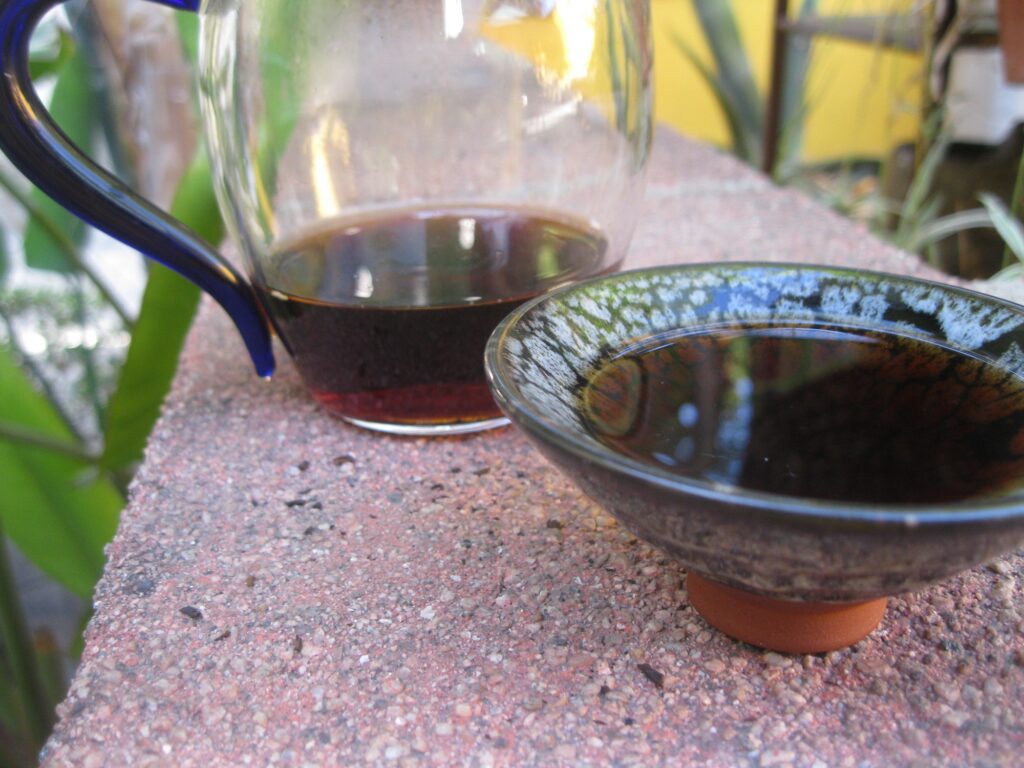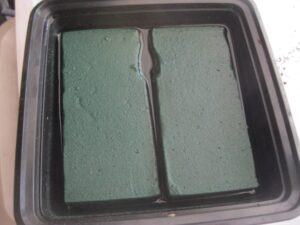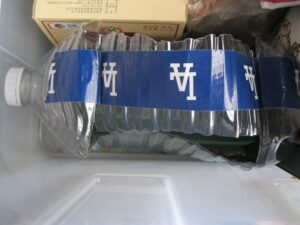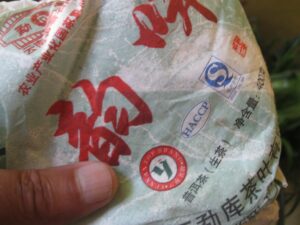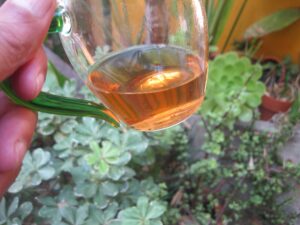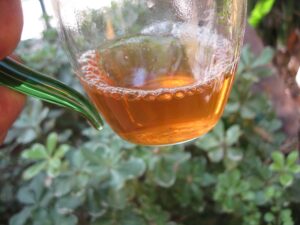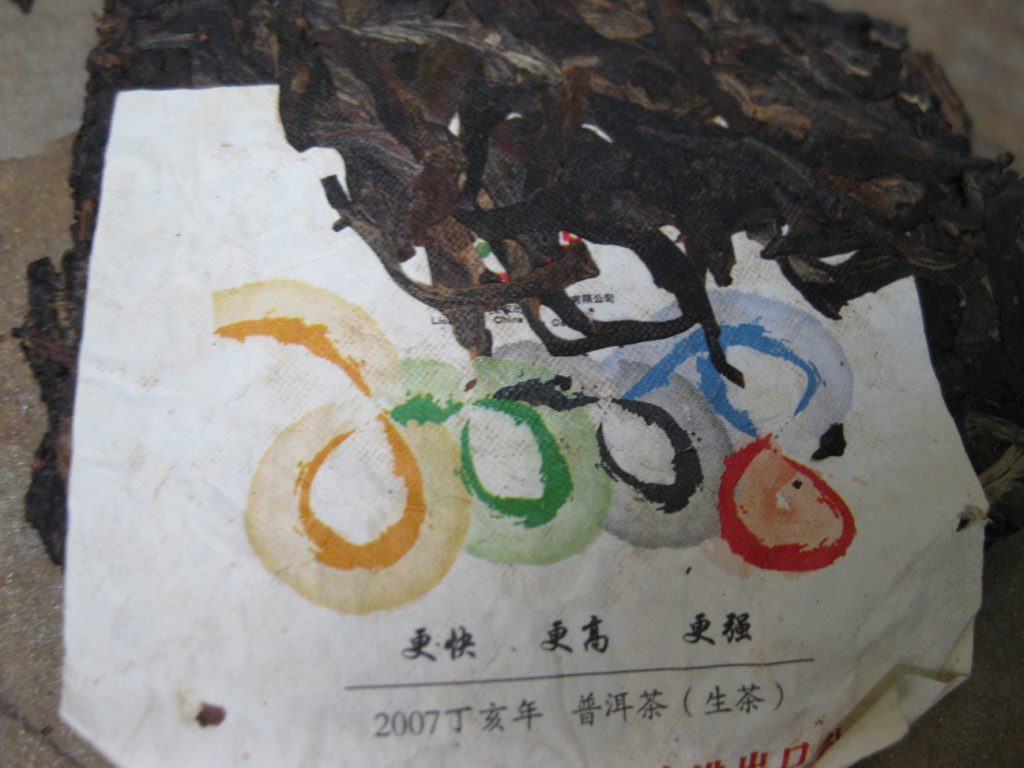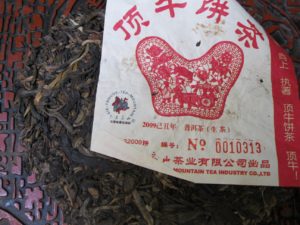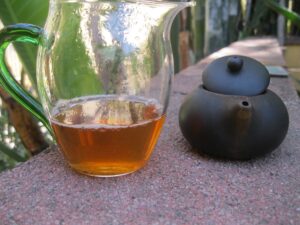A Night Visit with BZ Peacock
A Night Visit with BZ Peacock finds the Puerh Junky searching for an appropriate night cap, something with more bite and less dirt than the ’01 Yiwu Chashan. He grabs the caddie about 1/8th full of Buddha Impressions, when he finds the gaiwan of BZ Peacock opened the previous day staring at him.
There’s no doubt that the BZ Peacock is now the best its ever been, this Oct 2022. The two days of sitting have produced excellent results. It’s very much on par with Wang Xia’s ’01 Green Mark A, which I’ve mentioned several times by different names. It tastes like really good leather that’s been cured with the best of tallow and fragrances, like oud, sandalwood, and myrrh. It’s bitter on the finish with an interesting yet characteristic apple sweetness and sourness of many fancier Xinghai productions. This time it lurks amidst a a strong layer of smoked hickory.
The Buddha Impressions isn’t this woody, but like Grenouille and Zou Binlang’s Cinnamon, they all are of a similar profile. Buddha Impression is more peppery and ferment-y, with amaretto notes. Fuhai’s ’07 7536 can be added to the mix, but its notes are more commonly found in any kitchen cupboard, namely bay leaf and clove. The ’07 iteration is reported to be unique, to which I can attest to only from an ’04 in the stash, which is decidedly heavier stored and perhaps more in the vein of the 7542.
Certainly, one of the more curious aspects of all these productions is absence of a punctuated camphor note. Perhaps this will emerge, is only a product of storage, or its absences is particular to these productions. The ’05 Silver Pekoe, Tulin seems to demonstrate that storage plays a significant role in the camphor note. Its first iteration received heavy storage, expressing strong sour notes on the back end during the first four years of possession. The second iteration had that baby powder note but after a year of good heat and humidity transitioned into camphor. In the first, the camphor deepened, while the sour waned winding up with a dense camphor explosiveness. The second, has settled into the Grenouille and Buddha Impression neighbourhood. The second definitely stored under much drier conditions. In the final assessment, there’s no doubt that explosive camphor is closely correlated with humidity and warmth.
Finally, BZP lasts forever. It isn’t a quaffer, so a gaiwan is likely to last up to 5 sessions of 450ml each. I’ll relate something from my days in Beijing to this end. There was a retired Frenchman with whom I drank cognac on a couple occasions. We only had one teacup’s worth each time, sipping. Contrast this from the HK context, where they were drinking XO in tumblers as a “classy” sign of extravagance. Yeah, you can quaff BZP if you like, but it doesn’t feel like that type of tea to the Puerh Junky. . . but what does he really know anyway?
p.s. BZ Peacock sale till Sun.

